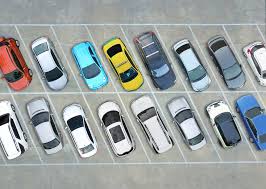When Pride in CPO Vehicles Hurts Your Profit Potential
It’s no secret that certified pre-owned (CPO) vehicles have become a big part of the used vehicle business at franchise dealerships.
Cox Automotive predicts 2020 will be another record-breaking  CPO year, with a forecast of 2.75 million retail sales. If dealers achieve this threshold, it will be the ninth-straight year of CPO sales volume gains.
CPO year, with a forecast of 2.75 million retail sales. If dealers achieve this threshold, it will be the ninth-straight year of CPO sales volume gains.
But there’s less appreciated aspect of the CPO business that I’ve been finding in my work with Provision ProfitTime dealers across the country.
The issue is that, by and large, the retail sales of CPO units do not drive the return on investment or net profit potential many dealers believe they should, due to the additional costs required to recondition vehicles to meet factory CPO program specs and market a vehicle as a factory-certified unit.
For example, in my work with ProfitTime dealers, it’s rare to find CPO units that rank above a Bronze or Silver investment value designation. These rankings reflect the fact that CPO vehicles typically have inherently higher Cost to Market percentages compared to other vehicles.
In addition, given the popularity of CPO vehicles among consumers, and the incentives for dealers to participate in CPO programs, most dealers’ CPO units face a fair amount of competition in the market.
The key take-away: In today’s market, like it or not, CPO vehicles often start out in a dealer’s inventory as troubled investments.
But that’s not how dealers typically treat their CPO vehicles.
Rather than recognize a Bronze or Silver CPO unit as a troubled investment, dealers tend to be proud of them—too proud, in fact, given the circumstances noted above.
The thinking often goes like this: “I’ve made a significant investment in this car to make it a CPO vehicle, and I’m going to mark it up to get my money back.”
Such thinking shows up when I see CPO units priced higher than their rightful market positions, given their Bronze and Silver investment grades.
I’ve lost count of how many times I see CPO vehicle pricing that, because it does not reflect a Bronze or Silver investment grade, puts a vehicle in direct price competition with a comparable new vehicle.
I’ll often ask: “If I’m a consumer, would I be more likely to buy the new or used vehicle if the price is essentially the same?”
Given the prevalence of the CPO pricing pitfall, I’ve been recommending two corrective actions to help dealers check their pride and face the truth of CPO vehicles in today’s market:
- Accept the fact that a CPO unit, due to its typically higher Cost to Market position, won’t offer the front-end profit you expect. In the current market, CPO vehicles that rank as Bronze or Silver investments are essentially commodity cars. They must be priced correctly to turn quickly and optimize what little front-end gross profit they may generate. The longer it takes dealers to reckon with this truth, the less money they’ll make on their CPO investments.
- Understand how CPO units help your business. I encourage dealers to recognize that while CPO units might start as troubled retail investments, they most certainly offer ample opportunity to make gross in your F&I and service departments—two big reasons why it makes sense to turn Bronze- and Silver-ranked CPO vehicles as quickly as possible. When dealers aren’t proactively pushing their CPO sales forward, they’re making a choice that hurts their financial interests.
As I talk CPO vehicles with dealers, the discussion sometimes turns to whether the dealer’s participation in the factory CPO program makes sense.
When this turn occurs, I’ll point out that it’s usually in a dealer’s best interest to play ball with the factory and be a good partner, even if the CPO program costs and sales targets seem out of line.
It also doesn’t seem like good business for dealers to ignore the current CPO opportunity. The record-setting pace of CPO sales suggest today’s buyers want these vehicles. The buyers seem to understand, and be willing to pay for, the additional peace of mind a CPO vehicle offers compared to a non-CPO unit.
Therein lies the opportunity for dealers: While consumers might pay for more for a CPO vehicle, there are limits to what they regard as a fair price to bring one home.
